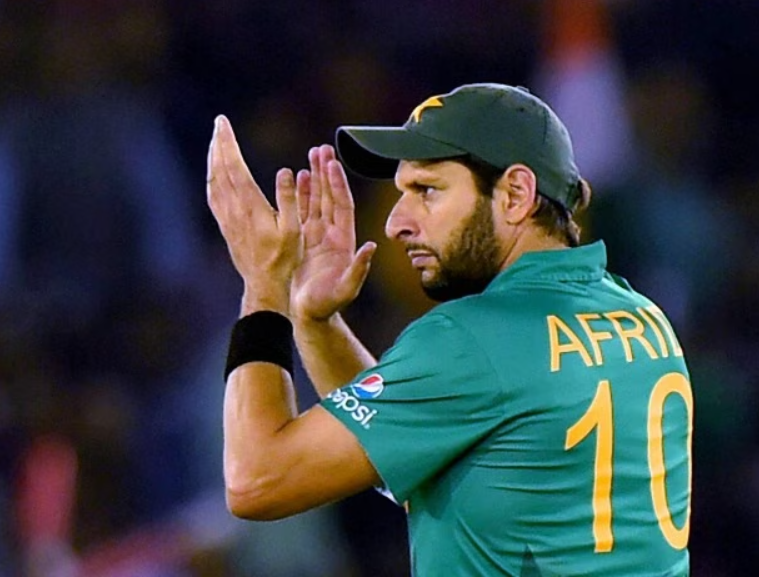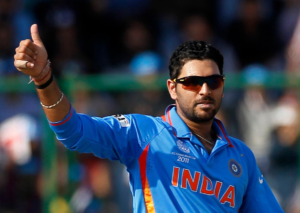Cricket, a sport known for its elegance and strategy, also unleashes moments of pure power. A well-timed swing of the bat can send shivers down the bowler’s spine and leave the crowd gasping in awe. The biggest hitters in cricket possess the ability to launch deliveries into oblivion, with sixes that soar high and clear, redefining the boundaries of the field.
Today, we delve into the archives of cricketing history and explore the top 7 Longest Sixes in Cricket History recorded in international cricket. These mammoth hits are testaments to the sheer strength and skill of the batsmen who unleashed them.
1. Shahid Afridi (153 Meters, 2013):
Shahid Afridi, a Pakistani cricket legend who could both bowl and hit with power, claims the top spot on our list. Nicknamed “Boom Boom” for his explosive batting, Afridi rewrote the history books in 2013. During a one-day international match against South Africa, he faced a delivery from bowler Ryan McLaren. This monster hit is still the Longest Sixes in Cricket History recorded in cricket.
With a mighty swing, Afridi sent the ball on a staggering journey – a whopping 153 meters! The ball soared high above the long-on boundary at the Wanderers Stadium in Johannesburg, leaving everyone speechless. This incredible feat solidified Afridi’s reputation as one of the most feared hitters cricket has ever seen.

2. Brett Lee (130 Meters, 2005):
Brett Lee, the Australian fast bowler known for his scorching pace that left batsmen ducking for cover, surprised everyone with his power at the other end of the pitch. Lee’s name might not be the first that comes to mind when thinking about the longest sixes in cricket history, but he certainly deserves a spot on the list. During a 2005 Test match against the West Indies, Lee unleashed his inner big-hitter at the Antigua Recreation Ground.
The batter swung with all his might, launching a huge hit that soared way past the mid-wicket boundary! They guessed it flew an amazing 130 meters! This mighty whack from the bowler, known more for his fast throws, left everyone stunned – the Windies bowlers and the crowd alike. It just proves that even the scariest bowlers can surprise everyone with a powerful swing, sending the ball flying into the stands!

3. Martin Guptill (127 Meters, 2012):
New Zealand opener Martin Guptill is known for his aggressive batting style. In a 2012 ODI against South Africa at the Johannesburg Stadium, Guptill connected with a delivery from Morne Morkel with brute force.
The ball rocketed towards the roof of the Wanderers Stand, estimated to have traveled a mammoth 127 meters. This awe-inspiring six, a strong contender for one of the Longest Sixes in Cricket History, showcased Guptill’s immense power and ability to clear the ropes with ease.

4. Liam Livingstone (122 Meters, 2021):
Cricket’s modern era is all about big hitters, and England’s Liam Livingstone is a perfect example. In a T20 match against Pakistan at Headingley in 2021, Livingstone faced a delivery from bowler Haris Rauf.
With a mighty swing, he launched a monstrous six that vanished into the crowd! The ball, estimated to have flown a whopping 122 meters, showcased Livingstone’s growing reputation as a dangerous force in T20 cricket. This brutal hit left everyone speechless and cemented his place as a big-hitting star.

5. Corey Anderson (122 Meters, 2014):
Adding to the batting firepower, New Zealand’s Corey Anderson also features on this list.. In a 2014 ODI against India at Hamilton, Anderson displayed his power-hitting prowess with a massive six off a delivery from Mohammed Shami.
The ball soared over the long-on boundary, estimated to have traveled 122 meters. This six, a behemoth in the realm of Longest Sixes in Cricket History, not only showcased Anderson’s raw power but also contributed to New Zealand’s impressive victory.

6. Mark Waugh (120 Meters, 1997):
Mark Waugh, an Australian cricket star famous for his graceful batting, surprised everyone with his ability to hit massive sixes too. During a Test match against New Zealand in 1997, played at the Basin Reserve in Wellington, Waugh faced a delivery from bowler Daniel Vettori.
With a powerful swing, he launched the ball on a long journey – an amazing 120 meters! It sailed right over the long-on boundary, leaving everyone in awe. This incredible six from Waugh is still a cherished memory in Test cricket history.

7. Yuvraj Singh (119 Meters, 2007):
Indian cricket legend Yuvraj Singh became a cricketing superstar during the 2007 T20 World Cup with his amazing batting. In the super-important semi-final against Australia, Yuvraj faced some of the best bowlers in the world, like the super-fast Brett Lee.
But Yuvraj wasn’t scared! He swung his bat hard at one of Lee’s deliveries and launched a giant six that flew way over the boundary at the Kingsmead Stadium in Durban. The ball, estimated to have traveled a staggering 119 meters, cleared the stands with ease.
This iconic six, a potential contender for one of the Longest Sixes in Cricket History, is etched in the memories of Indian cricket fans and is considered a turning point in the match, showcasing Yuvraj’s power and helping India gain momentum toward victory.

Factors Behind Monstrous Sixes
The list we explored highlights not just the phenomenal talent of these batsmen, but also the evolution of the sport itself. Here are some key factors that contribute to the increasing frequency and distance of these huge sixes:
-
Modern Bats: Cricket bats have undergone significant advancements in recent years. The use of lighter materials with a larger sweet spot allows for more power transfer from the batsman to the ball.
-
Fitness Regimes: These days, cricketers train super hard to get strong. This makes them swing the bat faster, which means they can hit the ball way further!
-
T20 Cricket: With the fast-paced T20 game all about big hits, batsmen are now like superheroes, trained to smash the ball out of the stadium! This new style of play has created a whole generation of players who can hit sixes all the time.
-
Ground Dimensions: Most cricket fields are the same size, but some new stadiums have shorter fences, especially along the edges. This makes it a little easier for batsmen to hit the ball out of the park in those areas.
Beyond the Distance: The Impact of Big Sixes
The ability to hit big sixes has a significant impact on the modern game. Here’s how these monstrous hits influence cricket:
-
Shifting Game Dynamics: Big sixes can drastically alter the course of a match. A single powerful shot can swing the momentum in favor of the batting team, putting immense pressure on the bowlers.
-
Higher Scoring Rates: The prevalence of big sixes leads to higher overall run rates in limited-overs cricket. This keeps the game exciting for spectators and demands innovative tactics from bowlers.
-
Evolving Bowling Strategies: Bowlers have had to adapt their strategies to counter the threat of big sixes. This has led to new variations and deliveries aimed at restricting boundaries.
READ ALSO:- Rohit Sharma Net Worth in Rupees | Decoding Hitman’s Wealth
The Future of Big Hitting
The future of cricket seems poised for even bigger and more frequent sixes. Advancements in bat technology and rigorous training methods will likely create a new breed of even more powerful batsmen. However, bowlers are constantly innovating, and the battle between bat and ball will continue to be a fascinating game aspect.
Conclusion
The top 7 longest sixes in cricket history stand as testaments to the immense power and skill possessed by some of the sport’s greatest batsmen. These colossal hits not only entertain the crowd but also influence the tactics and strategies employed in the modern game. As cricket continues to evolve, the battle for aerial supremacy between batsmen and bowlers promises to be an ever-more captivating spectacle.



